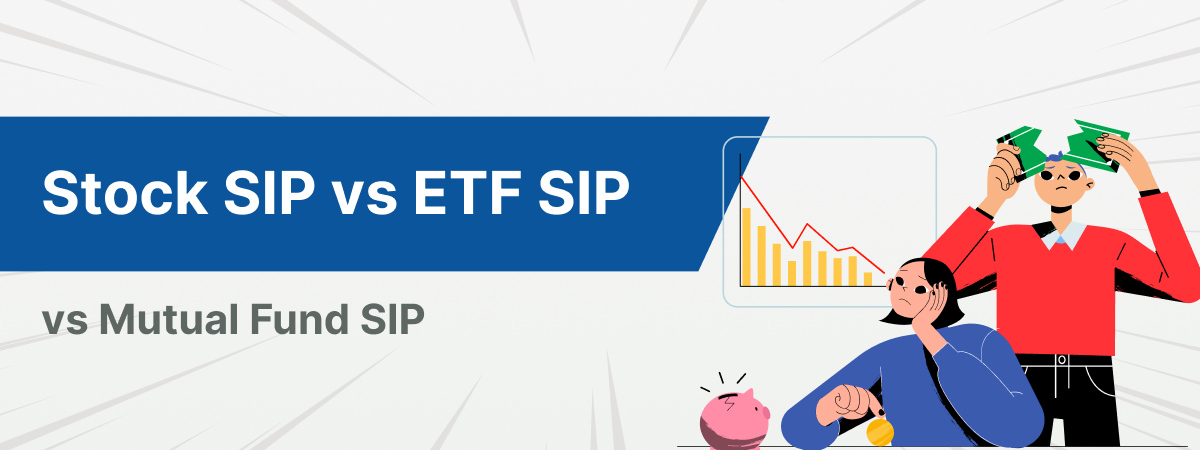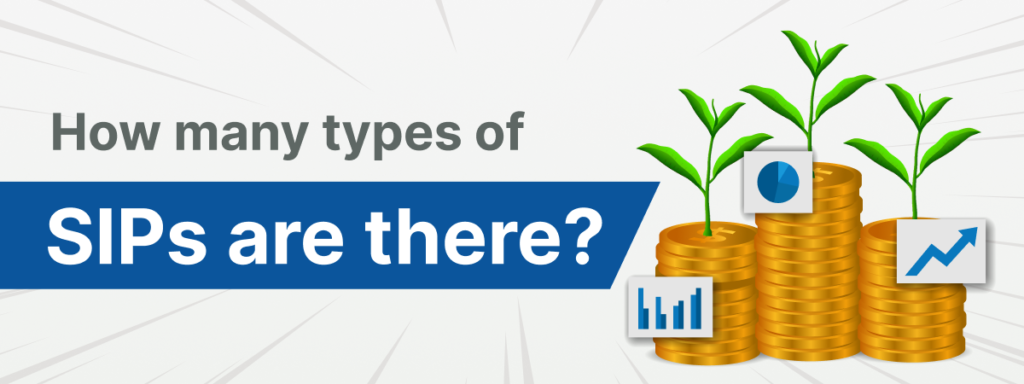What is a Stock SIP?
A Stock SIP (Systematic Investment Plan) is a method where you invest a fixed amount monthly in individual stocks (e.g., Reliance, TCS) manually through your brokerage account.
How It Works:
- You buy shares of a specific company every month (e.g., ₹5,000 in Infosys).
- No auto-debit facility – you must place orders manually.
- Prices fluctuate, so you get more shares when prices are low (rupee-cost averaging).
Example:
- Monthly SIP: ₹10,000 in HDFC Bank shares.
- Month 1: Buy at ₹1,500/share → 6.6 shares
- Month 2: Buy at ₹1,400/share → 7.1 shares
- Result: Your average cost reduces over time.
Pros & Cons:
| ✅ Pros | ❌ Cons |
| No expense ratio | High risk (single-stock exposure) |
| Full control over picks | Manual effort required |
| Potential for high returns | No auto-investing |
What is an ETF SIP?
An ETF SIP lets you invest a fixed amount monthly in Exchange-Traded Funds (ETFs) – baskets of stocks that track indices (e.g., Nifty 50).
How It Works:
- Auto-debit invests in ETFs like Nippon India ETF Nifty BeES.
- You own units of the ETF, not individual stocks.
- Trades like a stock but mirrors an index.
Example:
- Monthly SIP: ₹5,000 in Nifty 50 ETF.
- If Nifty rises 10% in a year, your investment grows similarly.
Pros & Cons:
| ✅ Pros | ❌ Cons |
| Low expense ratio (0.05-0.5%) | Limited outperformance (only index returns) |
| Auto-investing available | Liquidity issues in low-volume ETFs |
| Diversified (reduces risk) | No active management |
What is a Mutual Fund SIP?
A Mutual Fund SIP invests fixed amounts monthly in a mutual fund scheme (actively/passively managed).
How It Works:
- Auto-debit from your bank account (e.g., ₹3,000/month in Axis Bluechip Fund).
- Fund manager picks stocks (active) or tracks an index (passive).
Example:
- SIP in Parag Parikh Flexicap Fund (actively managed).
- Fund manager adjusts holdings based on market conditions.
Pros & Cons:
| ✅ Pros | ❌ Cons |
| Professional management | Higher fees (0.5-2.5% expense ratio) |
| Auto-debit + hassle-free | Underperformance risk (vs. index) |
| Wide variety (equity, debt, hybrid) | Exit loads (early withdrawal penalties) |
Stock SIP vs ETF SIP vs Mutual Fund SIP
| Parameter | Stock SIP | ETF SIP | Mutual Fund SIP |
| Definition | Monthly investment in individual stocks | Monthly investment in Exchange-Traded Funds (Index-tracking) | Monthly investment in Mutual Fund schemes (Active/Passive) |
| Minimum Amount | ₹500-1,000 per stock | ₹100-500 | ₹500-1,000 |
| Diversification | Low (Single-stock risk) | High (Tracks index) | High (Fund manager diversifies) |
| Expense Ratio | Zero (Only brokerage) | 0.05%-0.5% | 0.1%-2.5% |
| Brokerage Charges | ₹10-20 per trade | ₹10-20 per trade (some free) | Zero (Direct plans) |
| Auto-Investing | ✅ Yes | ✅ Yes | ✅ Yes (Auto-debit) |
| Liquidity | High (Instant selling) | Depends on ETF volume | High (Redemption in 1-3 days) |
| Tax Efficiency | LTCG: 10% (>1 year) | LTCG: 10% (>1 year) | LTCG: 10% (>1 year) |
| Returns Potential | Very High (Stock selection matters) | Market-linked (Index returns) | Market-linked (Fund performance) |
| Risk Level | Very High (Company-specific risks) | Moderate (Index volatility) | Moderate to High (Fund strategy) |
| Best For | Experienced investors | Passive investors | Beginners/Hands-off investors |
| Example | SIP in Reliance, TCS | SIP in Nifty 50 ETF | SIP in Axis Bluechip Fund |
FAQs
Q1. Which SIP has the lowest fees?
- ETF SIP (0.05-0.5%) beats Mutual Funds (0.1-2.5%).
Q2. Can I automate Stock SIPs?
- No, but brokers like Zerodha allow fractional investing (similar to SIP).
Q3. Which SIP is best for 10+ years?
- ETF SIP (Nifty 50) for lowest risk, Stock SIP for highest potential returns.










